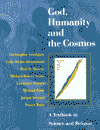The Career of Galileo GalileiThis can be briefly summarised as follows: 1564: born in Pisa 1592-1610: Taught mathematics in Padua, a city under the protection of Venice. Convinced from early on of the truth of Copernicanism (see the rise of Copernicanism). 1609: Obtained the principles of the telescope, constructed his own, and observed the craters of the Moon, the phases of Venus and the moons of Jupiter, none of which was predicted by the Aristotelian model. 1610: Went to work for Cosimo de’ Medici in
Florence, insisting on the title ‘first philosopher and mathematician.’ 1613: Wrote to Benedetto Castelli about the compatibility of Copernicanism with Scripture - this letter later developed into ‘The Letter to the Grand Duchess Christina’ (1615). 1616: Cautioned by Cardinal Bellarmine in Rome not to teach Copernicanism as a fact, though Copernicus’ book De Revolutionibus was re-published in 1620 with the heliocentric view treated as a hypothesis. Cardinal Maffeo Barberini of Florence was instrumental in ensuring the book’s re-publication. 1632: Galileo published his Dialogue Concerning the Two Chief World Systems - Ptolemaic and Copernican. This passed the ecclesiastical censors, and indeed did nominally present the systems as alternatives, but actually it was heavily pro-Copernican. Moreover, it appeared to ridicule the Aristotelian views of Barberini, by then Pope Urban VIII. 1633: Galileo was interrogated, and abjured his views under pressure. Put under house arrest until his death in 1642 (though he continued to be vigorously engaged in astronomy and other scientific work, including suggestions as to how a clock might be governed by a pendulum). To understand how Galileo came to be on
trial it is necessary to know a little more about the man himself. As T.S. Kuhn
pointed out, Galileo saw falling bodies, and swinging bodies, pendulums,
‘differently from the way they had been seen before.’ Furthermore, Galileo had a strong religious faith and was keen to relate his discoveries about the world to his Christian understanding. But he was a disputatious and difficult character, impatient of those who failed to follow the power of his arguments. These were all important ingredients in ‘the Galileo affair.’
Email
link | Feedback | Contributed by: Dr.
Christopher Southgate |





